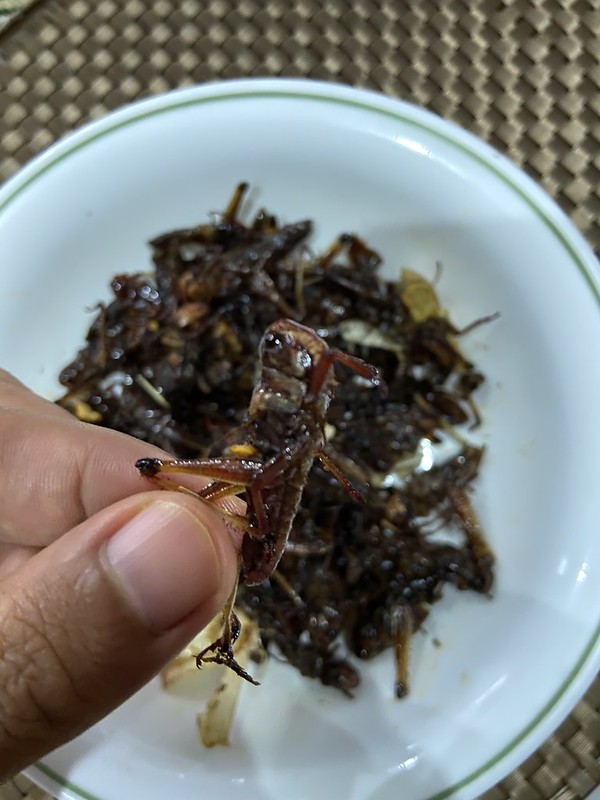Apan-apan (grasshopper)
On our way back to Marbel, Sean and Hannah, his charming girlfriend, saw a stall in
Barangay Paraiso. "Apan-apan, Manong, makaon ka?" (Game for fried grasshoppers, Manong?)
Fried grasshopper is a delicacy elswhere.
It brought back childhood memories: apan-apan is one of my favorite snacks. From Eat Matters:


Apan-apan in the Ilonggo dialect means grasshopper. Back in the days when the verdant fields of rice were still pesticide free, farmers would catch the deluge of grasshoppers infesting the rice crops with a large net.The grasshoppers are then cooked to be eaten as sumsuman( a drink accompaniment)when the farm folks gather to drink at dusk after a hard days work or, as a dish on the family dinner table. With some degree of hesitation I was able to taste this dish many years ago when somebody from Mindanao dropped us a bagful. It was crunchy alright but the discomfort of thinking that you are munching on a grasshopper somehow made the eating experience a bit stressful.No stresses from me!


Fried grasshopper is a delicacy elswhere.
In southern Mexico, grasshoppers, known as chapulines, are eaten in a variety of dishes, such as in tortillas with chilli sauce. Grasshoppers are served on skewers in some Chinese food markets, like the Donghuamen Night Market. Fried grasshoppers (walang goreng) are eaten in the Gunung Kidul Regency, Yogyakarta, Java in Indonesia. In America, the Ohlone burned grassland to herd grasshoppers into pits where they could be collected as food.
Comments
Post a Comment